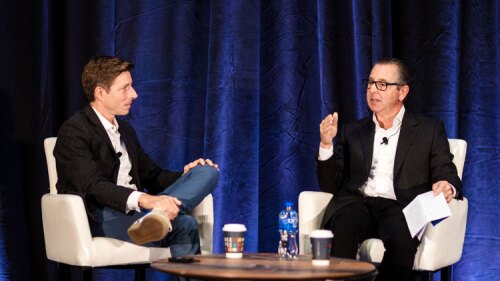A new Urban Land Institute report intending to open a yearlong dialog about the future of real estate in the changing economy finds a world struggling to adapt to new market realities.
While the 116-page report, “What’s Next? Real Estate in the New Economy,” makes no conclusions about what lies ahead, it highlights a number of trends that most certainly will alter urban planning, design, and development through 2020.
“Dramatic changes are in store for our industry,” Patrick Phillips, ULI’s chief executive officer, told reporters covering the Institute’s annual fall conference in Los Angeles.
The trends will play out over the next nine years, some more slowly than others, added ULI Chairman Peter Rummell. “Some decades are longer than others,” he said. “And we are finishing up a very long decade.”
The report, which was written primarily by industry consultant Jonathan Miller and based on the input, insight, and participation of ULI trustees, members, and staff, covers six major categories:
- Work, or the way evolving employment markets will affect real estate decisions. “Not since the elevator’s invention moved businesses out of walkups and into vertical towers has anything like the ongoing virtual revolution altered concepts of how to redeploy people and operate businesses,” the report says.
- Live, which examines housing demand and economics, including the size of new houses, different living configurations, suburban lifestyles, and urban action.
Rummell told reporters that the location of the suburbs is changing. “The market for homes 15 miles out of town is not going to dry up,” he said, “but close-in rehab and infill properties are becoming the new middle ground. There’s no such thing as hot [residential] real estate right now, but that’s the least cold.”
- Connect, or how technology is changing people’s desire for proximity to work as well as demand for retail, commercial, and residential space.
On this point, Joseph Azrack, managing partner of Apollo Global Management and self-described “contrarian, value-oriented investor,” told reporters that offices are evolving from workplaces to meeting places where people can get together via the internet from anywhere in the world. And as a result, the use of office space is changing dramatically.Noting that the business is “in the middle of very profound change,” Azrack ventured that 40 percent less office space per capita will be needed over the next decade.
- Renew, which contemplates new sources of energy and demands for greater efficiency.
The report points out that green initiatives always get a boost when energy costs spike, only to evaporate as soon as prices come back down and return to affordable levels. And Thomas Toomey, president of Littleton, Colorado–based UDR, a large multifamily real estate investment trust, said he can’t get his residents to pay for any energy improvements. “Only major apartment owners are making these investments,” he said at the press conference.Consequently, Toomey applauded those localities that are “drawing lines in the sand” by not letting anything other than sustainable projects be built and forcing property owners to become more green by taxing them at higher rates or even fining them.
- Move, covering increased demands for efficient transportation and ways to finance infrastructure improvements. “Any new transportation investment needs to produce corresponding land use outcomes,” the report says.
- Invest, which looks at factors affecting the availability of capital for all manner of real estate.
Azrack said the impact of regulation on financial institutions was his greatest concern going forward. “We’re going to have to reinvent institutions that intermediate capital to real estate,” he said. “There’s still a lot of uncertainty.”
But Victor MacFarlane, chairman of MacFarlane Properties, a San Francisco–based investment firm, said he’s most optimistic about the American financial sector because it has “a head start” on the rest of the world.
At the same time, though, MacFarlane pointed out that democracies tend to react more slowly than other forms of government, which simply lay down an edict and go from there. Therefore, he said, “we need enlightened leadership. For business to work here, we need a lot more certainty.”



